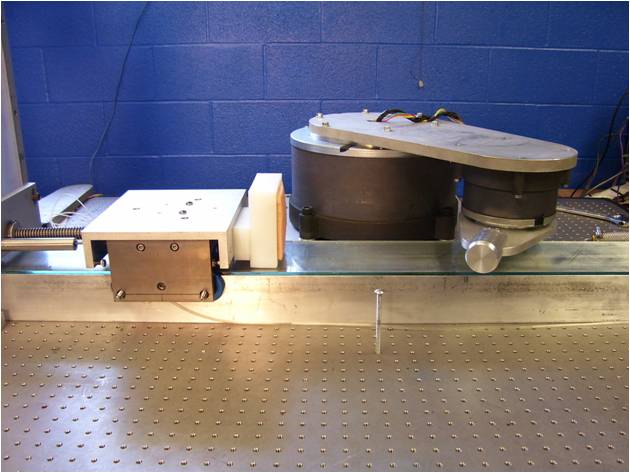
Neural Network Control of a Robot Interacting with an Uncertain Viscoelastic Environment
There is practical motivation to study robot contact with a viscoelastic environment because of the increasing applications involving human-robot interaction. Modeling contact and compensating for its effects in a closed loop controller has been a focus of research over the last two decades. To capture the physical effects during contact, researchers, over the years, have proposed many contact models, ranging from the simplest Hertz model to the more complex Kelvin-Voigt and impact pair model. Hunt and Crossley proposed a compliant contact model, which not only included both the stiffness and damping terms, but also eliminated the discontinuous impact forces at initial contact and separation, thus making it more suitable for robotic contact with soft environments. Because the model has been shown to better represent the physical nature of the energy transfer process at contact, it has found acceptance in the scientific community. Given some model of the impact dynamics, another challenge is to develop a closed loop controller for a robot, as it transitions from a non-contact to contact state. The destabilizing impact forces and the uncertainty in the environment dynamics make it a complex control problem. A variety of techniques have been developed to control the robot motion in the presence of a contact transition. In our previous efforts to tackle this problem, we used a linear spring contact model to develop a controller for robot contact transition with a stiff environment. The contribution of the work was the development of a single continuous controller for both the non-contact and contact states of the robot. In our most recent work, we used a more general Hunt-Crossley contact model which also accounted for the energy dissipation at contact, and hence was suitable for viscoelastic contact. An adaptive control scheme was developed in to account for linearly parameterizable uncertainty in the environment. However, the development in assumed the knowledge of the local deformation of the material raised to the Hertzian compliance exponent, which is usually difficult to determine. One reason that exact knowledge of the Hertzian compliance exponent is required in is that this effect is not linearly parameterizable. In this paper, we use a Neural Network feedforward term in our controller to estimate the non linear-in-parameter (Non-LP) environment uncertainties. Thus, no knowledge of the environment parameters is required. In a recent work, an impedance control method in conjunction with an NN based environment estimation is used to generate reference trajectory for force tracking. However, accelerations and force measurements were used as inputs to the NN and the NN weights were tuned off-line. In this paper, only position and velocity measurements are required and no acceleration and force measurements are used in the design of the controller. Also, the NN weights are automatically adjusted online, with no off-line learning phase required. The control structure in this paper includes a desired robot velocity as a virtual control input to the unactuated viscoelastic mass-spring system, coupled with a force controller to ensure that the mass is regulated to the desired position. Uniformly Ultimately Bounded (UUB) stability of the controller is proven using Lyapunov stability analysis. An experimental testbed is currently being developed with a planar two-link direct drive robot that will collide with a viscoelastic human tissue phantom to test the performance of the developed controller.

A movie of the experiment is provided below.
Publications
S. Bhasin, K. Dupree, P. M. Patre, and W. E. Dixon, "Neural Network Control of a Robot Interacting with an Uncertain Viscoelastic Environment," IEEE Transactions on Robotics, submitted.
S. Bhasin, K. Dupree, P. M. Patre, and W. E. Dixon, "Neural Network Control of a Robot Interacting with an Uncertain Hunt-Crossley Viscoelastic Environment," ASME Dynamic Systems and Control Conference, Ann Arbor, Michigan, 2008, to appear.
